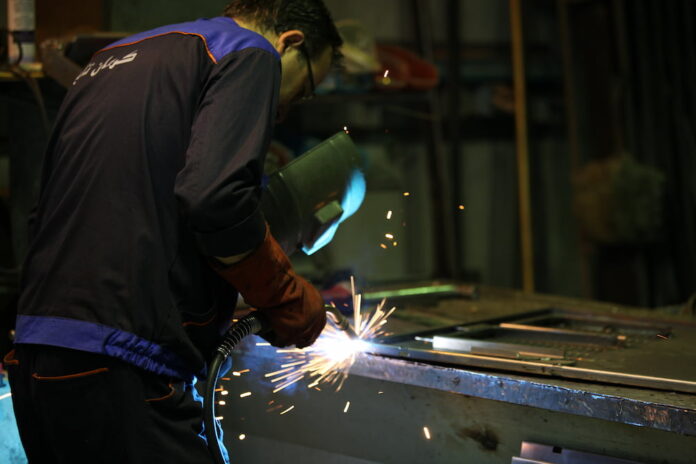Innovation is all pervasive in the manufacturing segment, and the medical device industry is no exception. If you run a business in the domain, you will want to embrace the latest and the best technologies to enhance quality, efficiency, and safety.
Laser processing should be on top of your checklist because it opens a whole new world of possibilities. According to MarketsandMarkets data, the global laser technology market is poised to touch the $25.6 billion mark by 2027.
It is also likely to have an impressive compound annual growth rate (CAGR) of 8.9% from 2022 to 2027. That’s a good reason to join the laser bandwagon for manufacturing device manufacturers.
The American medical device market is competitive, with more than 6500 medtech players in the industry. You can imagine the effort you need to make to stand apart, but laser innovation can give your business a competitive advantage. However, it is easier said than done.
Like any other technology, embracing laser innovation requires a significant investment. But you shouldn’t think twice about going ahead with it because the benefits it serves are worthwhile.
Let us explain why laser manufacturing makes a wise investment for medical device manufacturers.
Understanding Laser Processing Technology
Before investing in laser processing solutions, you must understand what the technology is about. You also need to know how it can contribute to the manufacturing process. Laser machines and tools can cut, weld, and mark materials such as plastics, metals, and composites.
They use a high-energy laser beam to heat specific areas of materials and cut through them with the greatest precision and minimal damage. Laser processing solutions make an ideal investment for medical device manufacturing, where precision, quality, and waste minimization are priorities.
According to Novanta Photonics, laser tools offer cutting edge to manufacturers. Laser processing solutions include solid-state, ultra-fast, and CO2 laser variants. When combined with advanced software, these solutions can serve the benefits of precision and performance. Further, they equip industries with innovative systems such as additive manufacturing.
Applications of Laser Processing in Medical Device Manufacturing
Laser technology can modernize medical device manufacturing in several ways. Let us explain how you can leverage it to improve your production processes:
Marking for Information and Traceability
Medical device manufacturing requires flawless precision to ensure that products meet specifications and FDA standards. Each product should have a mark showing it matches the essential standards and specifications. You can rely on laser marking to create high-quality, durable marking on the product surface for information and traceability.
You can integrate laser marking and coding technology into the assembly line process to put serial numbers on finished goods. The best part is that laser beams do not affect the corrosion resistance and quality of the device.
Cutting for Implantable Devices
The laser beam-cutting process is another practical application of this technology for medical device manufacturing. It is helpful for the production of implantable devices such as stents, catheters, pacemakers, hip replacements, and dental implants.
Precision matters the most for these devices because it reduces potential damage in the long run. After all, implantables should be durable enough to last for decades despite exposure to internal fluids and surrounding tissue growth. Precision also ensures comfort, which is essential for a foreign object placed inside the human body.
Welding for Joining Intricate Parts
Laser welding can be an effective way to join the tiny intricate parts of medical devices. The good thing is that the technique works even with dissimilar materials without damaging or melting them. It is fast, flawless, and cost-effective, making it better than the traditional soldering or brazing techniques.
Since a high-speed laser beam can travel at 100 miles per second, it can fuse parts within milliseconds. The process is clean and flawless because it does not generate toxic fumes and harmful particulates. It has a low cost because it does not need consumables like fluxes.
Micromachining for Surface Modification
Laser surface modification with micromachining is another viable laser processing solution for medical device manufacturing. The process can help create small features on the device surface by removing material with a laser beam.
The laser micromachining technology helps with the production of parts and devices with complex geometries. Research shows its efficacy in creating a wide range of textures for hard and ultra-hard materials. These include diverse sizes, area rations, orientation, and geometrics.
Conclusion
Laser processing solutions have emerged as game-changers for the medical device industry. Laser tools and machines can mark, cut, weld, and modify delicate parts with flawless precision. That makes them the best investment for manufacturers. If you still have second thoughts about embracing technology, you will miss out on a chance to grow and succeed.
Read Also
- Optimizing CT Protocols: The Hidden Key to Efficiency and Cost Savings in RadiologyIntroduction: Why CT Protocol Optimization Matters Computed Tomography (CT) is a cornerstone of modern diagnostic imaging, providing critical information across nearly every medical specialty. However, maximizing the value of CT — both clinically and financially — requires more than just advanced hardware. The real secret lies in the optimization of CT protocols. When CT protocols… Read more: Optimizing CT Protocols: The Hidden Key to Efficiency and Cost Savings in Radiology
- The Role of Carbide Burs in Modern Dental ProceduresAs a result of this procedures need to be well coordinated and to this end, precision tools are used by dental practitioners. Among the most essential tools in a dentist’s arsenal are carbide burs, which have revolutionized various aspects of dental work. Today’s dentistry cannot work without these tools as they are both strong, sharp,… Read more: The Role of Carbide Burs in Modern Dental Procedures
- Detection of Diabetic Retinopathy: The AI AdvantageDiabetic retinopathy (DR) is a leading cause of blindness among working-age adults, affecting millions worldwide. The prevalence of DR is alarmingly high, affecting an estimated 34.6 million people globally. In the United States alone, it is estimated that 7.7 million adults have some form of diabetic retinopathy. How Does Diabetes Affect the Eye? Most of… Read more: Detection of Diabetic Retinopathy: The AI Advantage
- Advances in Digital Health: Transforming Modern HealthcareThe healthcare landscape is undergoing a seismic shift with the advent of digital health technologies. These innovations are not just modern conveniences; they are transformative tools that bridge gaps in accessibility, improve patient outcomes, and empower individuals to take charge of their health. From wearable devices to telehealth and artificial intelligence, digital health is creating… Read more: Advances in Digital Health: Transforming Modern Healthcare
- The Latest Advancements in Urology ProceduresUrology, the branch of medicine concerning the urinary system and male reproductive organs, has seen remarkable advancements in recent years. Technological innovations have led to more precise, less invasive, and increasingly successful procedures that promise better outcomes for patients. From state-of-the-art robotics to personalized medicine approaches, the field of urology is evolving at a rapid… Read more: The Latest Advancements in Urology Procedures
- Navigating the Future of Healthcare: The Role of Technology and Innovation at Saint Luke’s HospitalIn an era of rapid technological advancement, the landscape of healthcare is undergoing a profound transformation. At the forefront of this evolution is Saint Luke’s Hospital, a leading medical institution in Los Cabos, Mexico. With a commitment to providing cutting-edge care to its patients, the hospital is harnessing the power of technology and innovation to… Read more: Navigating the Future of Healthcare: The Role of Technology and Innovation at Saint Luke’s Hospital







